A Brush with Life - Issue #37 Painting Autumn Golds
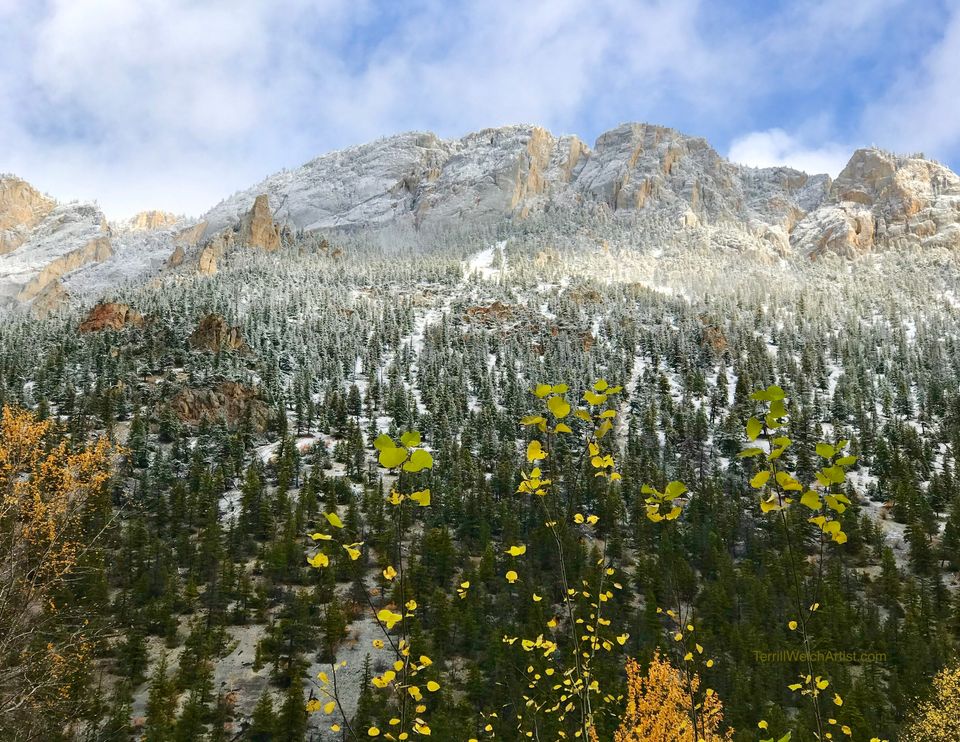
The cadmium and lemon yellows triumphantly dash above crimson reds splashing both against the winter violets and mauve greys of pending winter. I have been traveling into the interior of British Columbia where snow flurries captured a whole day of my time in a remote cabin. Upon returning to the west coast and Mayne Island, I find the leaves have fully turned to gold here as well. Let’s see what we have from past and present as we linger in the cool autumn air.

It is the final day of a solo retreat in Marble Canyon Provincial Park and the first day I had been well enough from a bad cold, that had settled into my chest, to do any hiking. The next morning, I would be heading back to a meeting in the Fraser Canyon. But, for the next hour, I just wondered around the edge of Crown Lake enjoying the views.
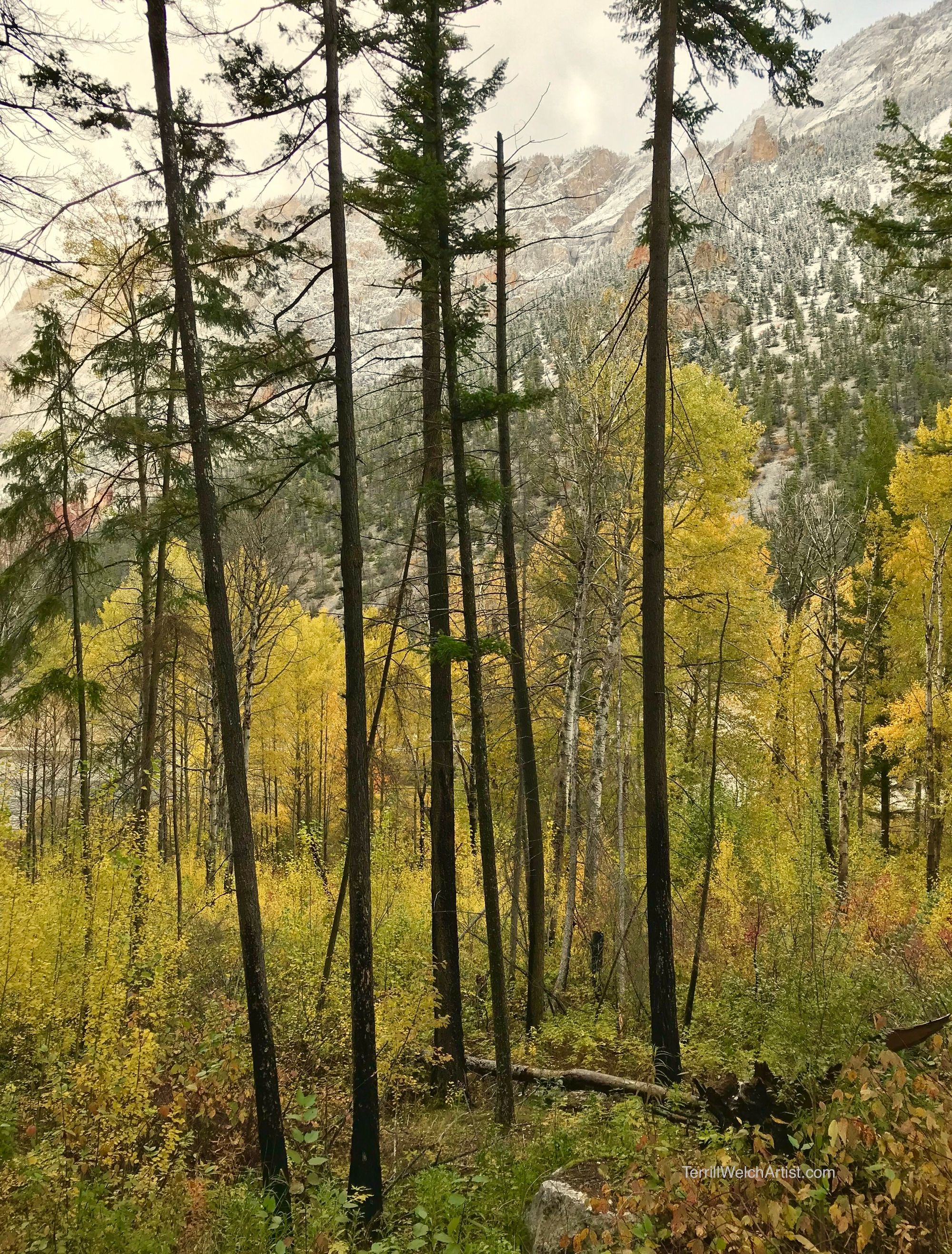
The temperature was just above freezing and a wind was thrashing the larger Pavilion Lake, next to this one, into whitecaps. Earlier in the morning it had been frosty, quiet and calm.
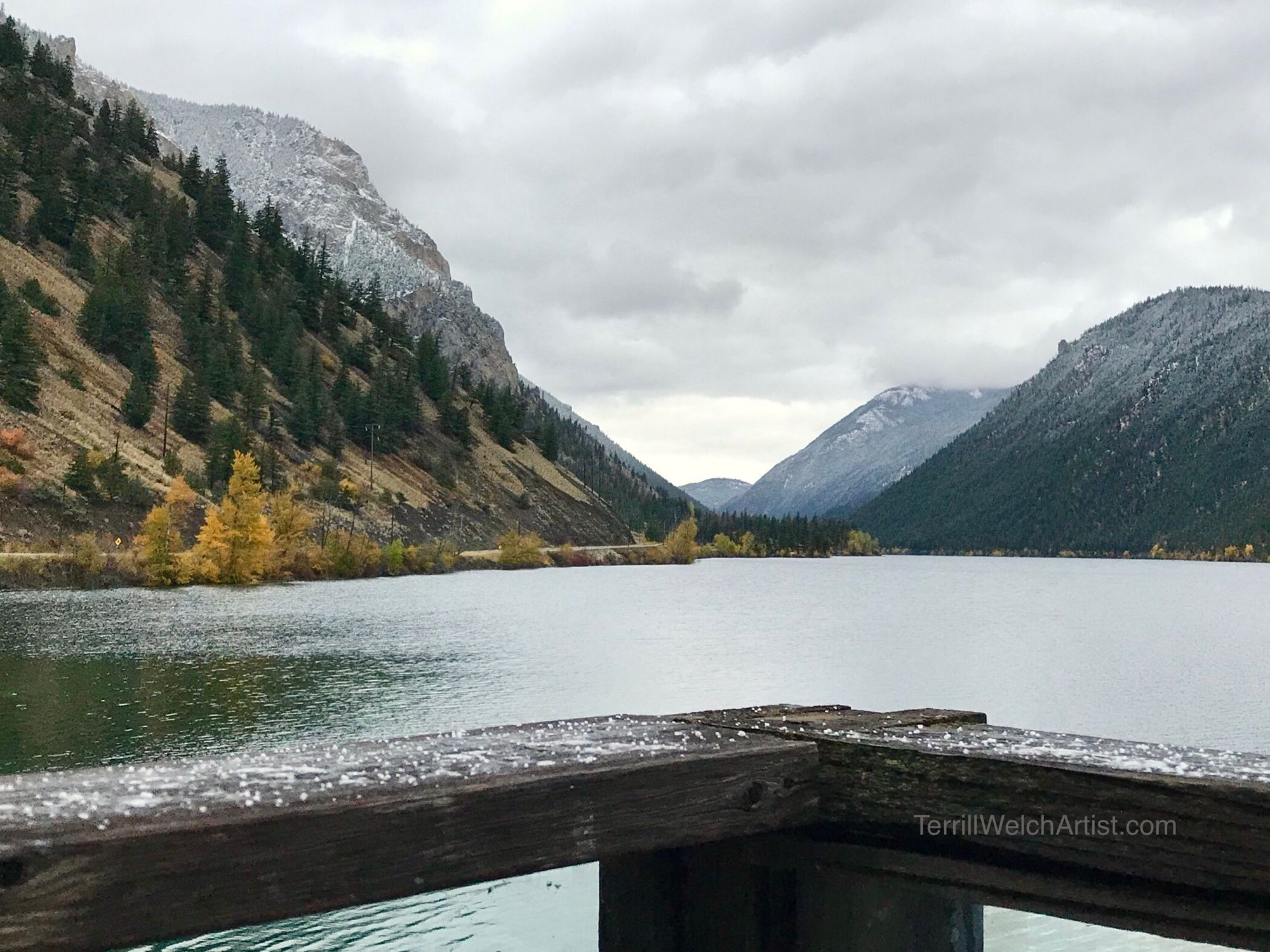
A waterfall drops a large pine tree over the edge seconds after I leave the area, reminding me that luck is sometimes on my side. I had taken a deer trail to the base of the fall and missed the sign that said that debris often came over the top and not to linger. I didn’t linger out of common sense but if I had seen the sign I might not have gone the route I did. Beautiful though!
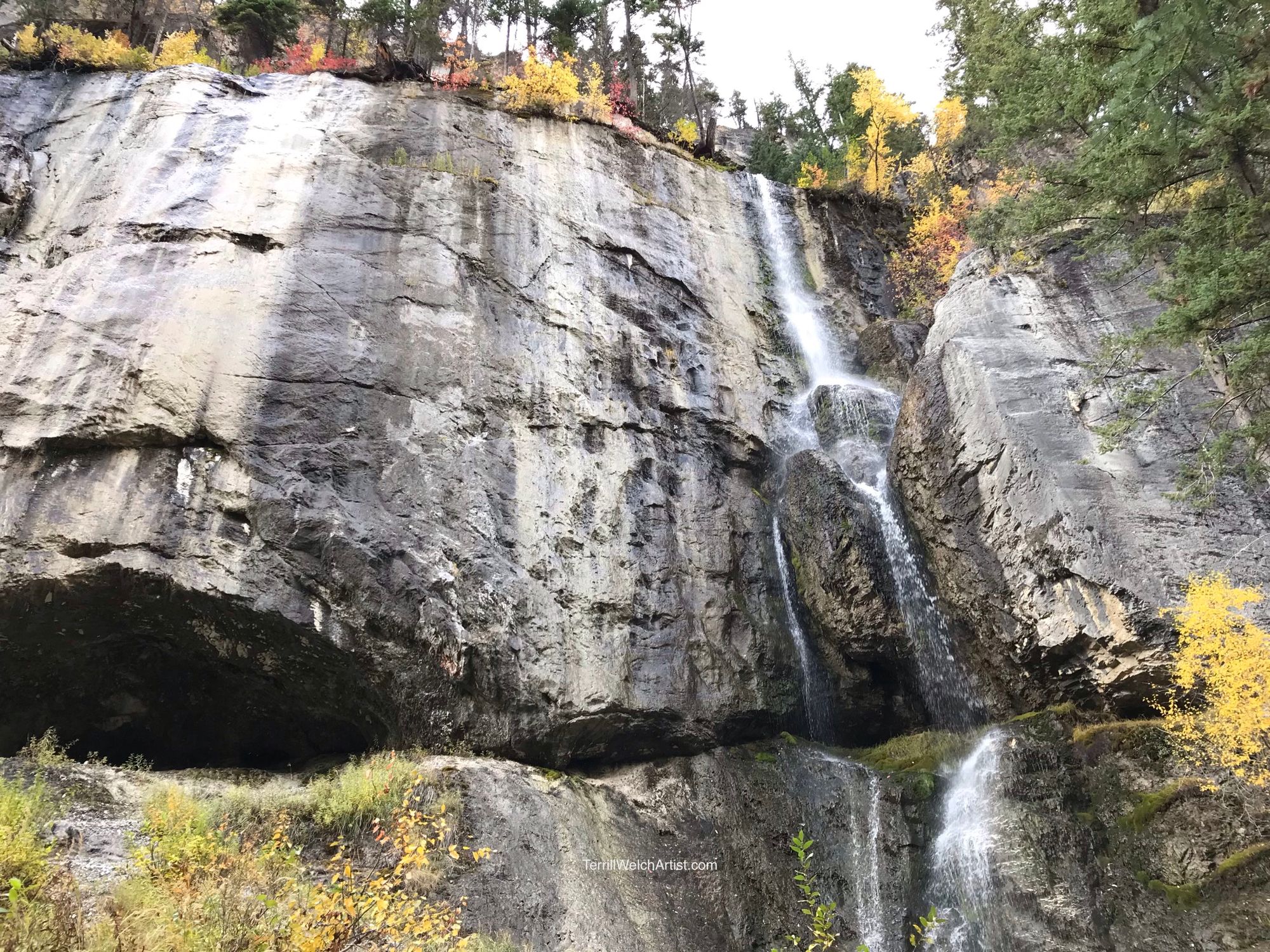
The Sunday I had arrived and I first spotted the cabin I was going to be staying in through the trees on Pavilion Lake was much warmer.
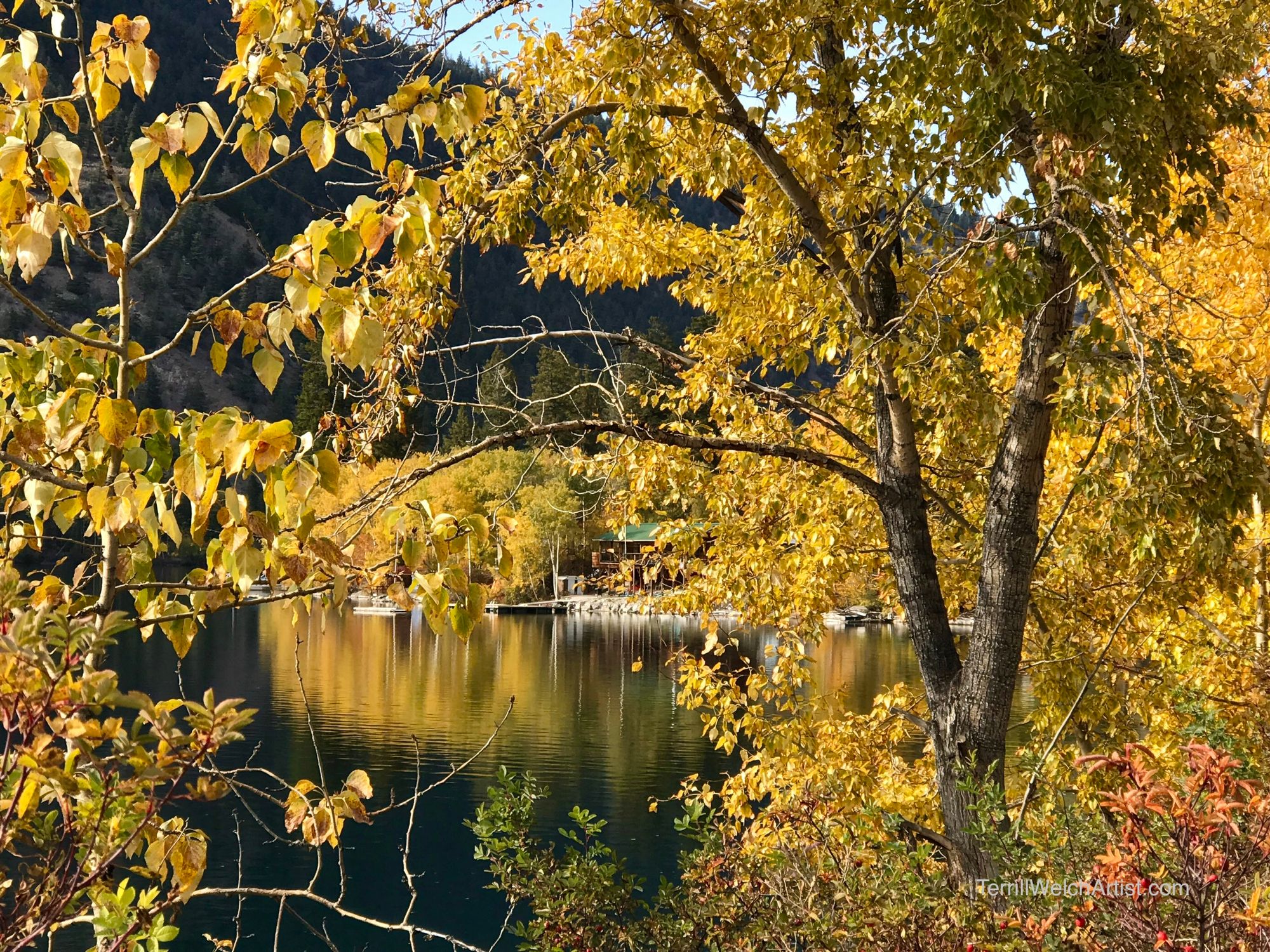
The specular reflection on Crown Lake were enough to confuse one’s sense of space.
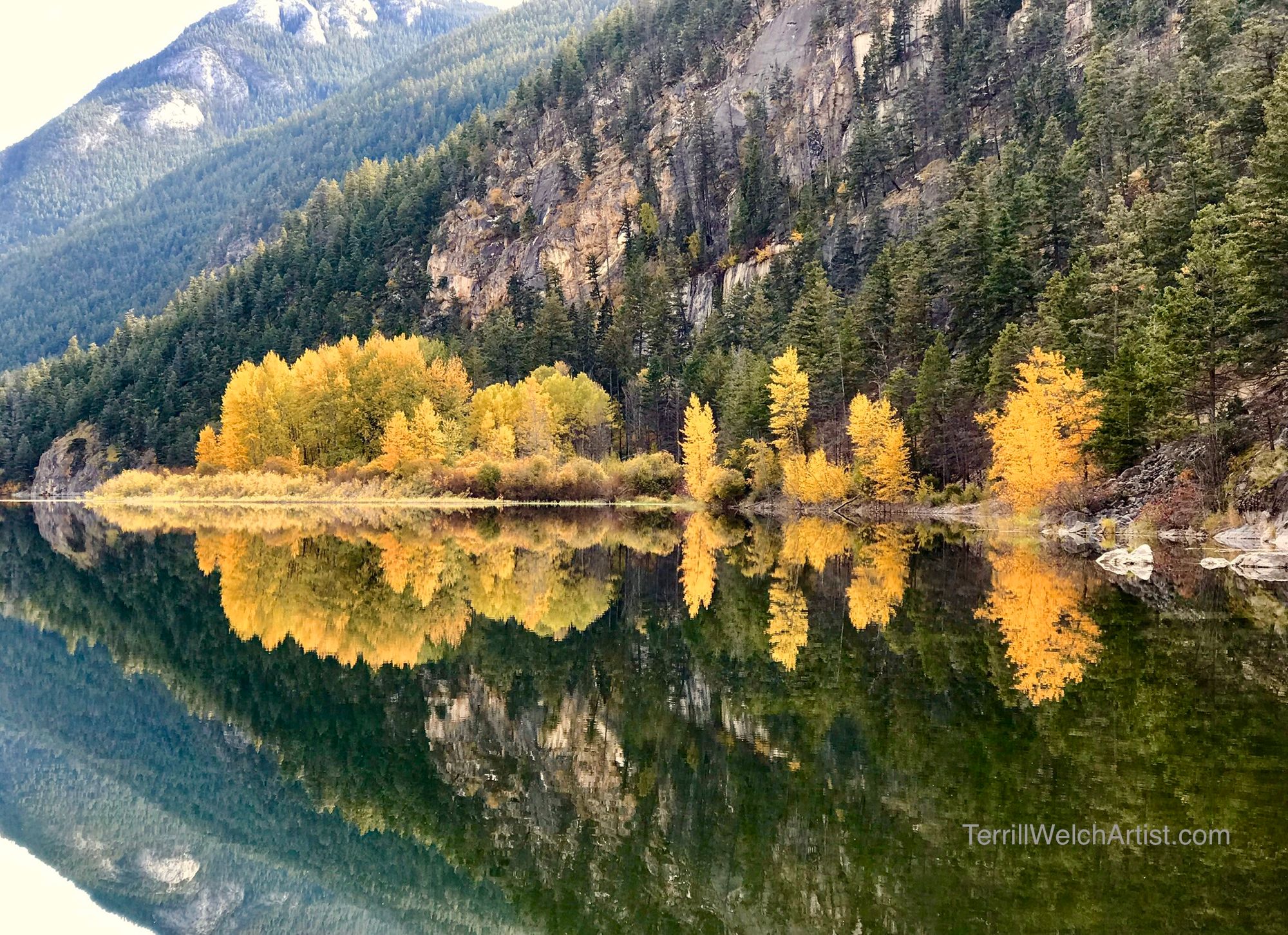
I was going to go plein air painting on my second morning and though it is not raining yet, Pavilion Lake is slate grey with flexes of black where the hunter green hills dive their broken reflections into the water’s depths. For now, I have taken my coffee back to bed and will watch the lake out the large windows from this cozy vantage. Let’s see if we can learn a little bit more about where I am while we wait for the weather to lighten up.
The limestone canyon in which Marble Canyon Provincial Park is located is a rare geological formation in British Columbia. At its full height Marble Canyon is over 800 metres (>2,600 feet) high and many kilometres long. This canyon was once part of a Pacific island chain, another section of which lies in the northwest corner of the province.
Did you know that Pavilion Lake is of international importance and part of a NASA research project? I was so surprised to discover that it holds such significant mysteries way down underneath - freshwater microbialites. I am adding a photo from the NASA research gallery so you can see. The structures are of various shapes and sizes, some up to three meters high, and are estimated to have started forming 11,000 years ago after the glaciers receded from the area. The microbialites, are calcareous structures likely produced by microbial communities. Believed to be similar to some of the earliest life forms on earth, this lake is a potential window into ancient ecosystems on Earth and possibly early Mars. Pavilion Lake is one of only a few places in the world where these types of microbialite features can be found.
Reference: research website for Pavilion Lake http://www.pavilionlake.com
The lake falls within the traditional territory of the Ts’kw’aylaxw (pronounced “Ski-lak”) people, also known as the Pavilion First Nations Indian Band, who have a special heritage and spiritual connection to this lake and its surrounding land.
How is this information for a grey morning discovery?
Painting those autumn golds
And it is still thunderously grey out the windows. I must say, beautiful all the same. By afternoon, it is still 12 degrees Celsius and gorgeous on the deck of the cabin so I settled in to paint.
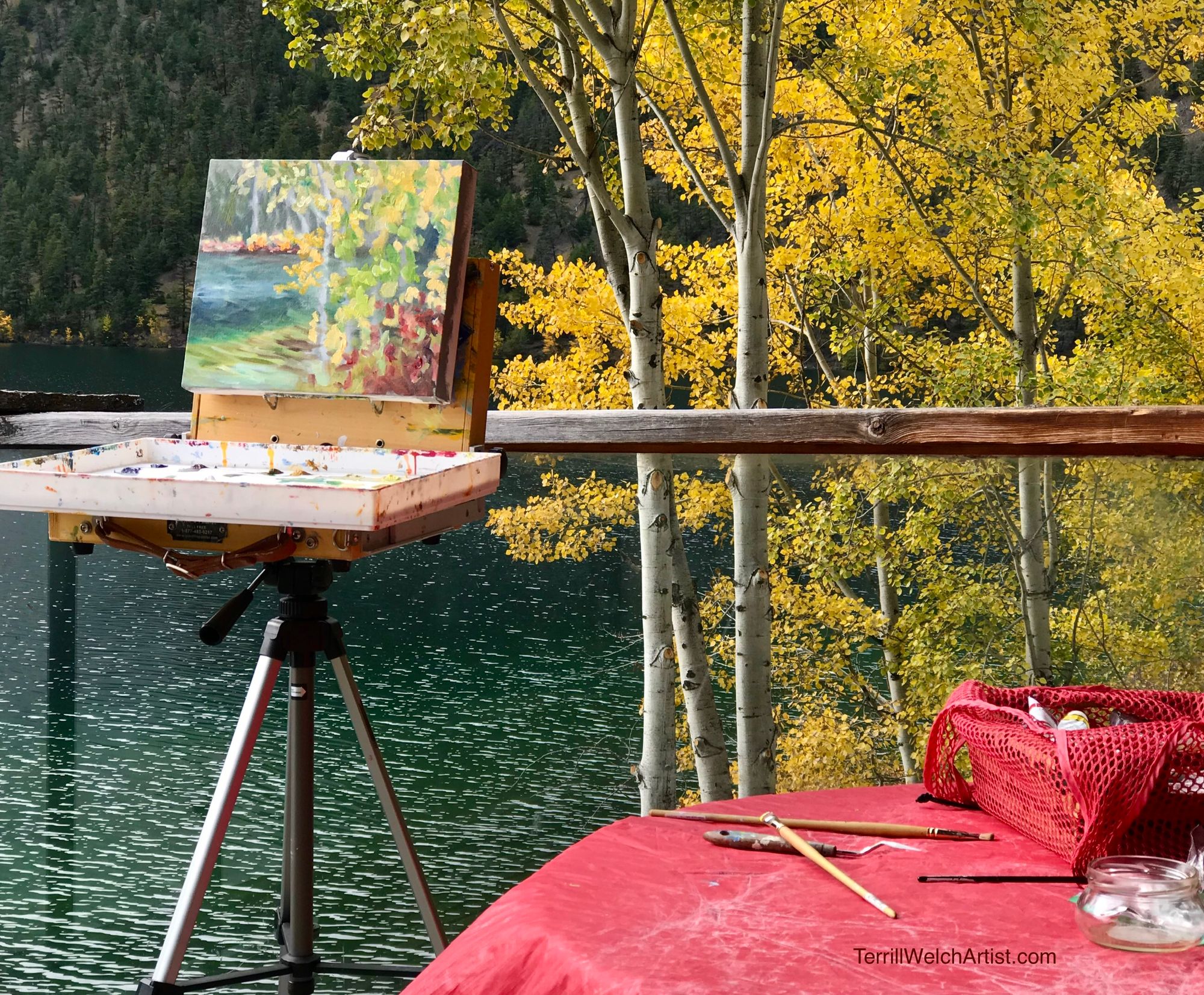
The weather is unpredictable and rain was forecast so I worked quickly.
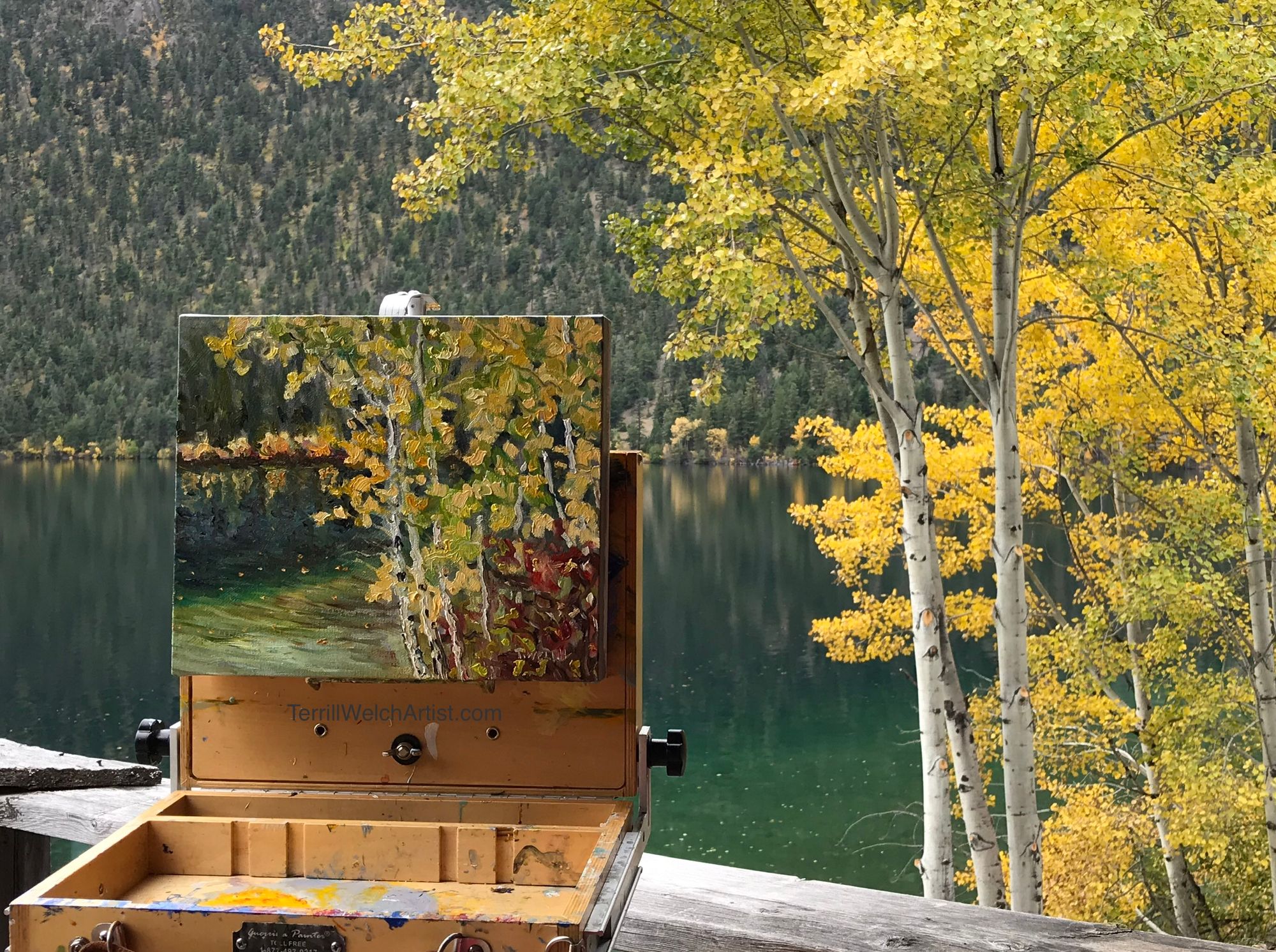
Only at the very end of my painting session did I need whip everything under the covered part of the deck to avoid the rain.
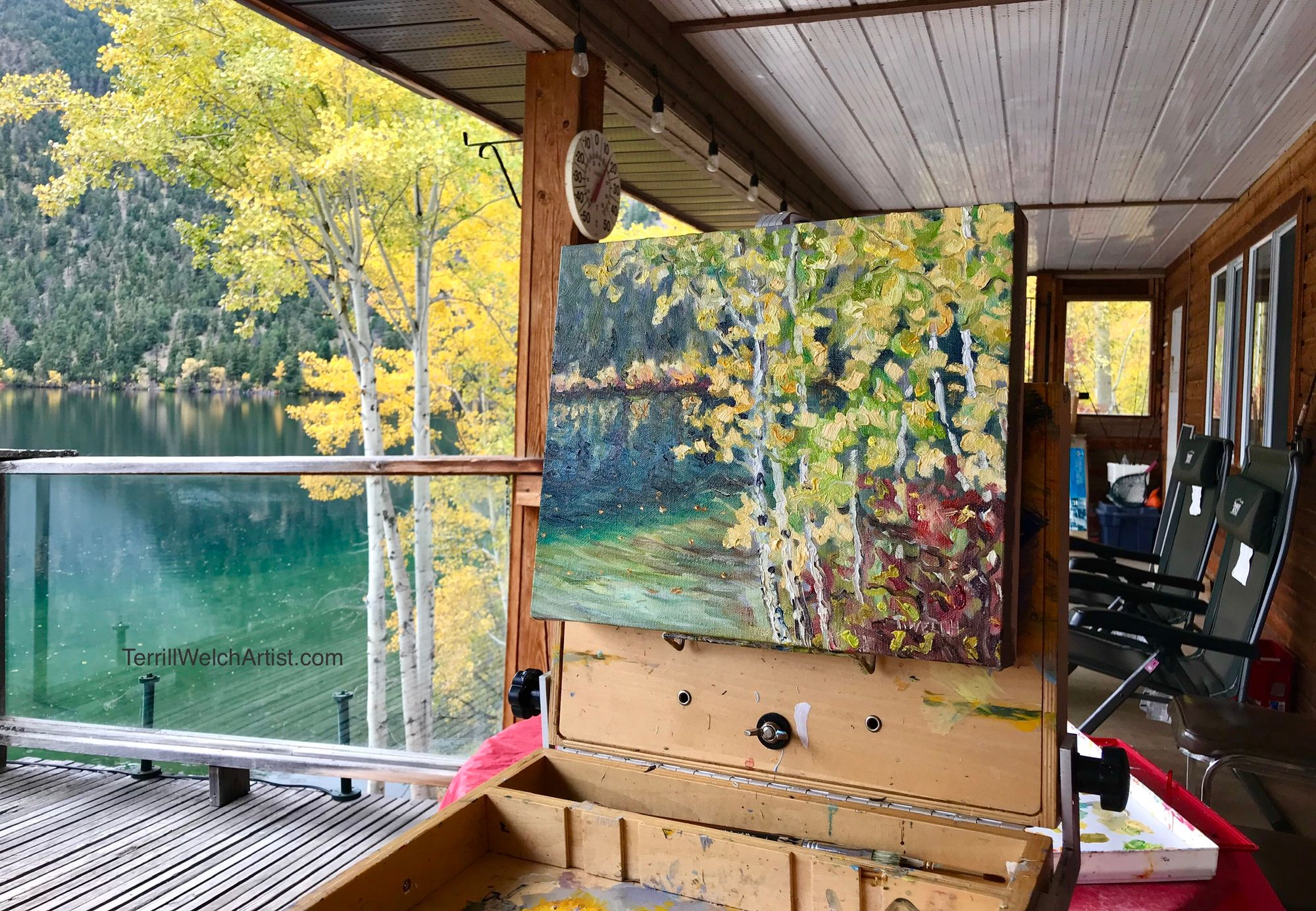
This was Monday and by Thursday afternoon I was a world away back on Mayne Island painting with the students in our Japanese Garden.
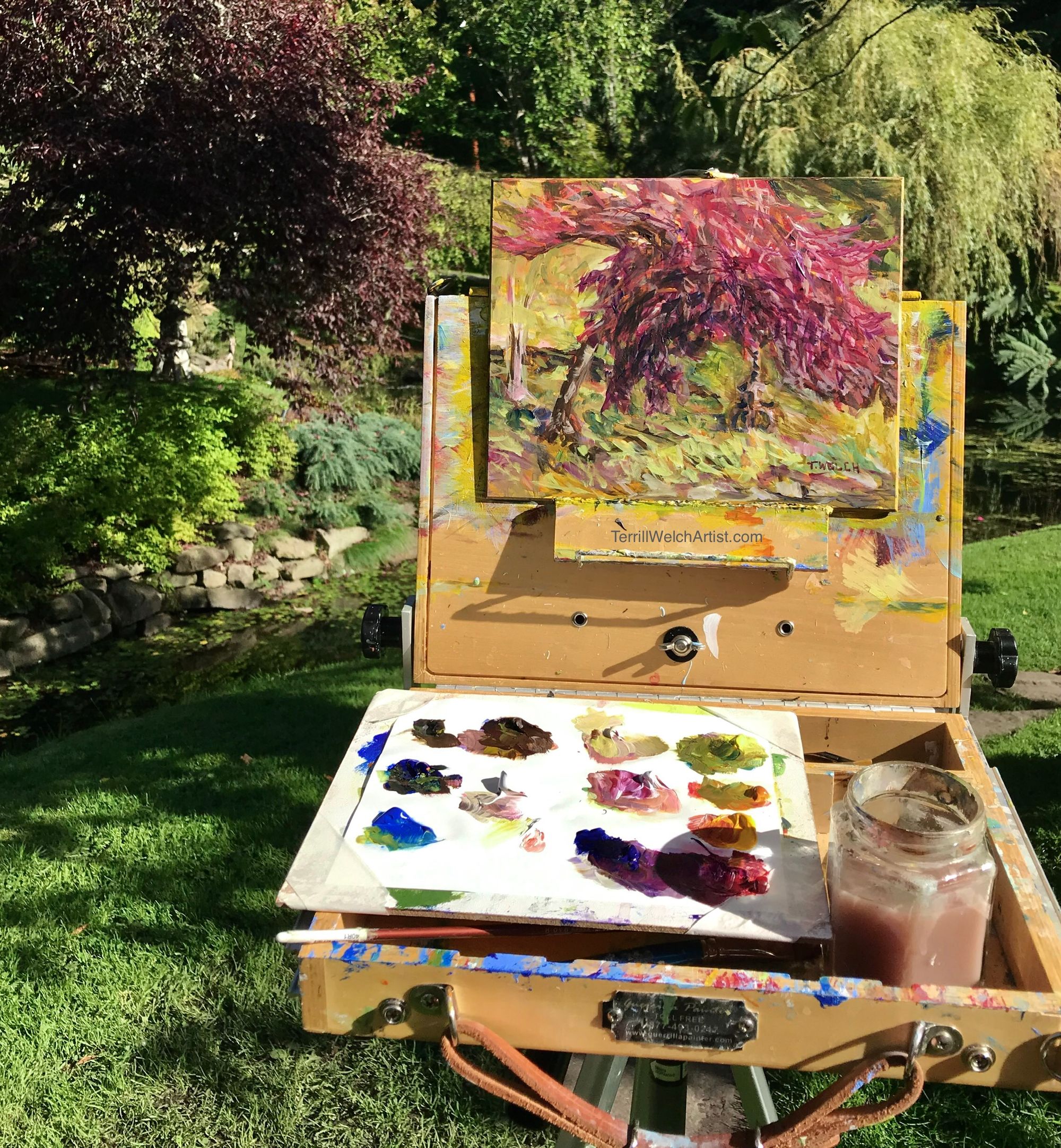
Then by the Monday of Thanksgiving weekend it felt like my more northern excursion had traveled south with me.
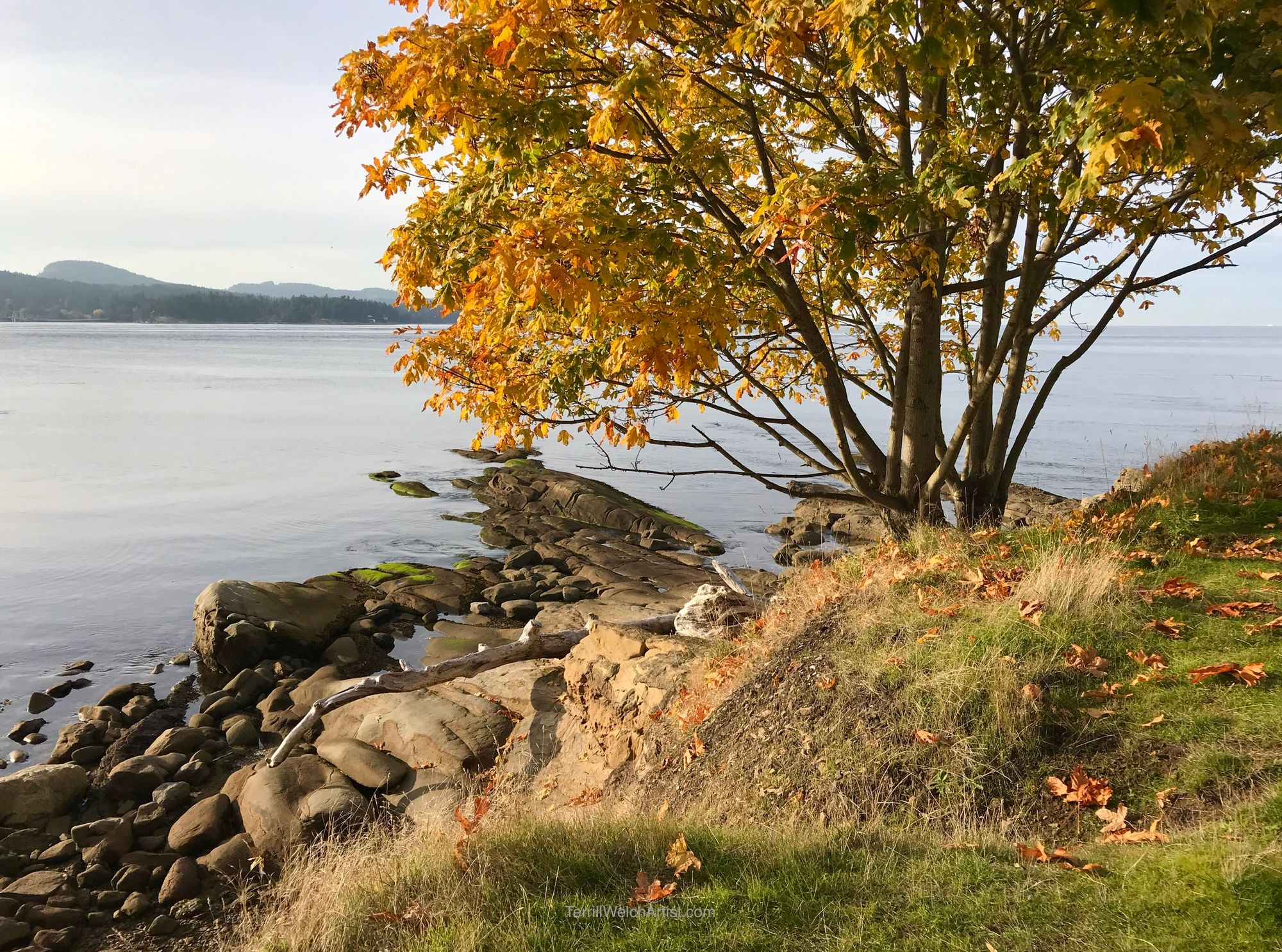
I have a couple of paintings of this favourite tree with its autumn golds. This larger one now lives with my sister. There is something about autumn by the sea with the gray melancholy wrapped in fall colours. This particular day is one of those slow-baked, melancholy west coast Sundays, so moist and tender you can slice it with a tear.
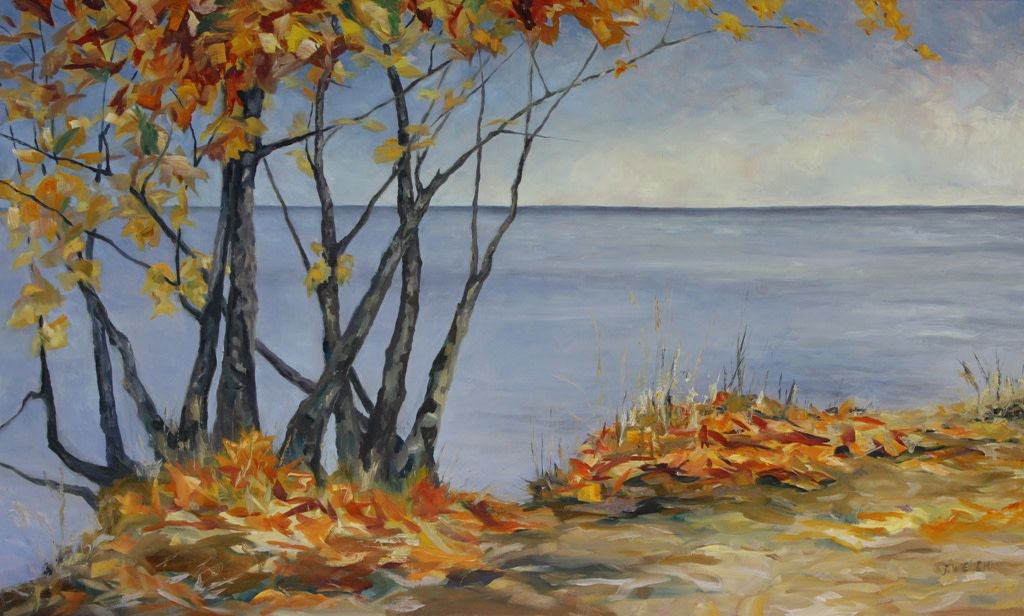
And a medium-sized work that is still available on a lighter day both in mood and colour. The winter light of late autumn dances across the sea and sky. Some place on the other side of the Strait of Georgia, high up in the coastal mountains, it is snowing.
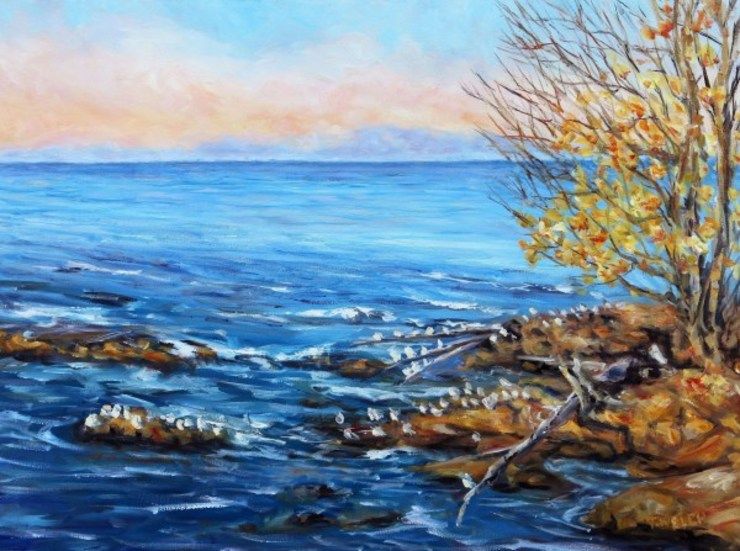
Golden Evening Across the Strait of Georgia by | Artwork Archive
The winter light of late autumn dances across the sea and sky. Some place on the other side of the Strait of Georgia, high up in the coastal mountains, it is...
I admit to be scrambling somewhat these days to keep everything moving forward. However, autumn melancholy golds will always get their dues before I am allowed to release them into the chill of winter and the longer nights. I shall do what I can and trust that things will all come together in the end.
What I am Reading
These two world views in this issue are about 5 hours driving (on a good day) and a ferry ride apart. I couldn’t decide which images I wanted to show you. They are like two parts of myself. One on the north and one on the south. One part of me that wanders through the woods admiring and sinking into nature’s garden and other that enjoys human designed spaces with attention to colour, size and shape relationships. The aesthetic in the human designed garden is borrowed from nature but organized in new ways. Few of the plants in the the Japanese Garden are native to its controlled and manicured environment. Yet, it is one of the few places on the island where fall colours of my more northern life are abundant. Both places have waterfalls, though the fresh air is scented by different trees and different water. They both touch the surface of each part of me but at slightly different angles. The light feels fast in both places because the of the size of the hills in one and the trees in a contained space in the other. I want to think of them as either/or but their common earth and sun refuse such simple dichotomy of categorization.
These false dichotomies of of either/or analysis I have set up in my thinking are part of a western philosophy that leaves us living a life as if experiencing a constant eye examination - better or worse, is this better or worse. An eye examination process will help us get a prescription to see better but the same process is limited in helping us to live better. Let me see if I can expand these thoughts a little into the imaginary of “what if”. What if we held the whole world space as one? What if there was no north as it is still south of somewhere else and no south because it is north of another place? What if humans and their creations were just another element of nature? What if we didn’t seek out what was better or worse but only observed with curiosity? What if we woke each day saying - now isn’t this interesting!? - Let’s learn more about this moment. What if we went through a day listening for different stories than the ones we think we know?
These questions come from an essay I am reading “Listening for Different Stories” by Julie Cruikshank in The Nature of Canada edited by Colin M. Coates and Graeme Wynn (2019). The essay’s story begins in the year of 1982 at a one day conference on early human history in Haines Junction, Yukon. The participants were archeologists, historians, scientists and local First Nations discussing the environmental factors impacting regional history. After a full afternoon of discussions Annie Ned, then in her eighties and having lived her whole life there hunting, trapping, fishing and raising her children and grandchildren, stood up and addressed the room. She wanted to know where these people came from and observed that they “talked from paper” and that she wanted to “talk from grandpa”. She went on then to share some of her experiences and revealing radical differences between Indigenous and western perspectives on the environment. Annie Ned suggested that the western participants should “listen for different stories” and that this required more attention, engagement, reflection and curiosity than simple “listening to stories.” This is because when we listen TO stories we take what we hear and map it onto our own world view and framework of understanding. Often the awkward parts that don’t quite fit are simply lopped off and discarded as anomaly or mythology or some kind of uncomprehending “otherness”. Annie Ned was pointing out our mistake and suggesting an alternative that, for me, is even more critical to consider today than the day she said it.
When we listen FOR stories we momentarily set aside all that we think we know about organizing and understanding our world and we listen as if we are learning for the first time - because we are. What Annie Ned doesn’t mention is how brave we must be to listen FOR stories and how willing we must be to appear foolish and incompetent and possibly even ridiculous - mostly to ourselves but this self-view has powerful regulators on our behaviour. Setting aside what we think we know is hard work and work that we are often reluctant to do for the simple reason of an economy of energy in living a life with knowing what we already know. But I sense that Annie Ned is on to something and I invite us all to “listen FOR different stories” rather than listening TO stories.
*Annie Ned was awarded the Order of Canada in 2003 in part for her contributions to documenting history in the southern Yukon Territory.
Until next time!
Canadian Contemporary Artist Terrill Welch Landscapes and more by impressionist painter Terrill Welch
Canadian landscape painter, Terrill Welch, exposes the mystery in an ordinary day, reminding us that there is only one moment – this one.

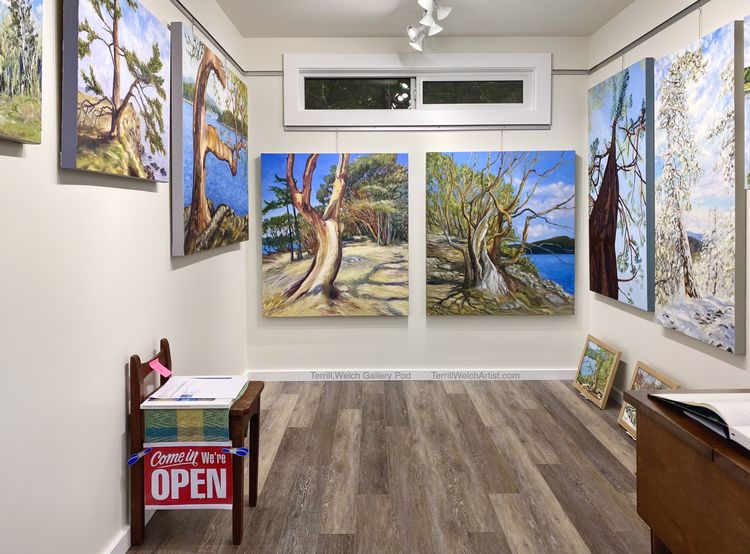
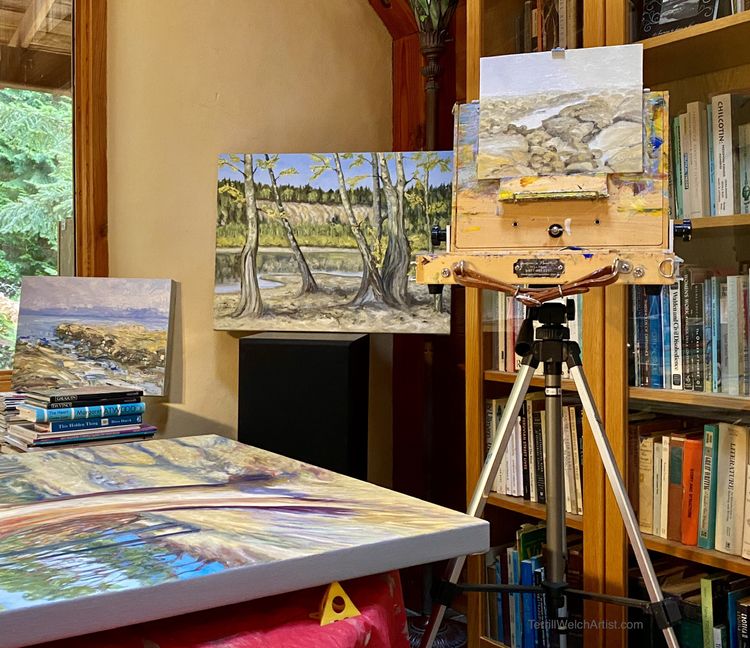
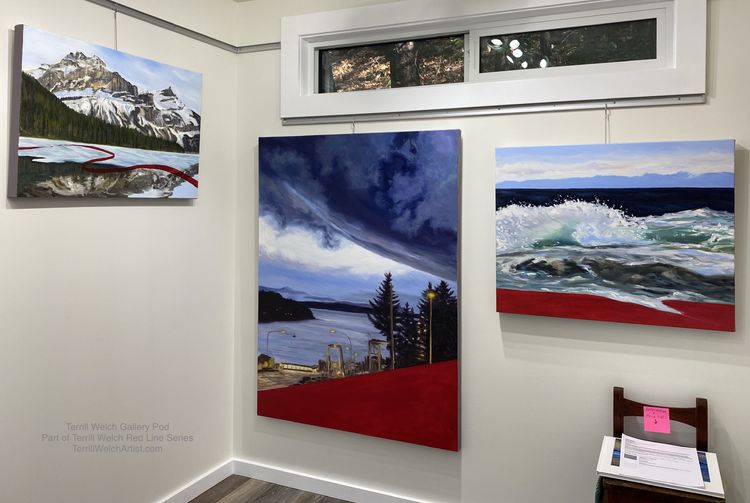
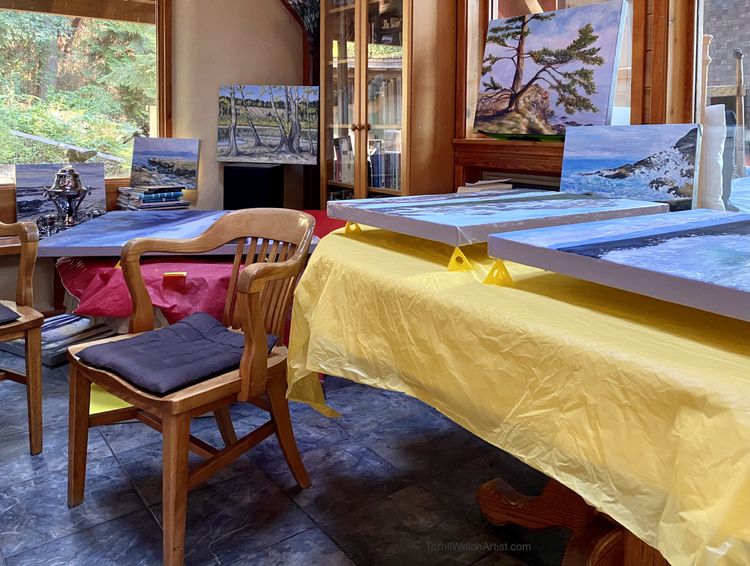
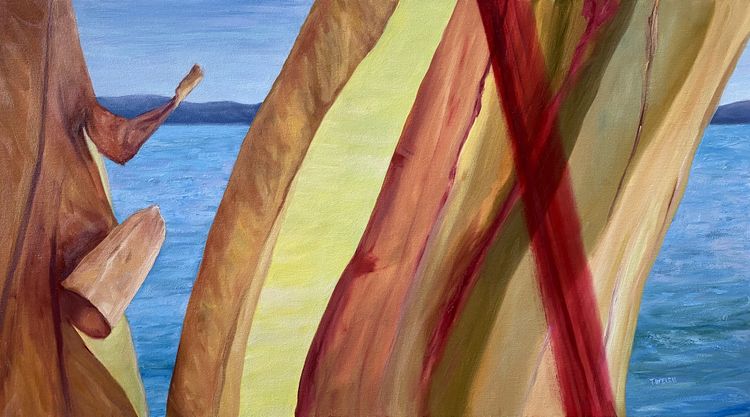
Member discussion